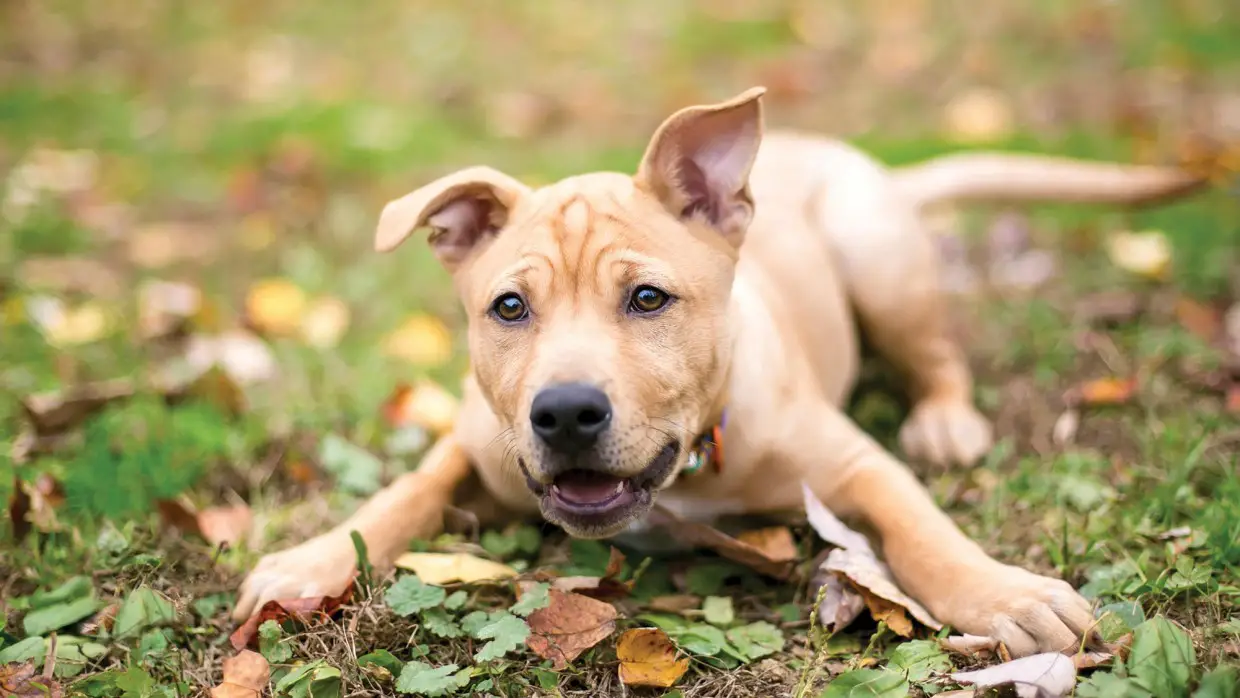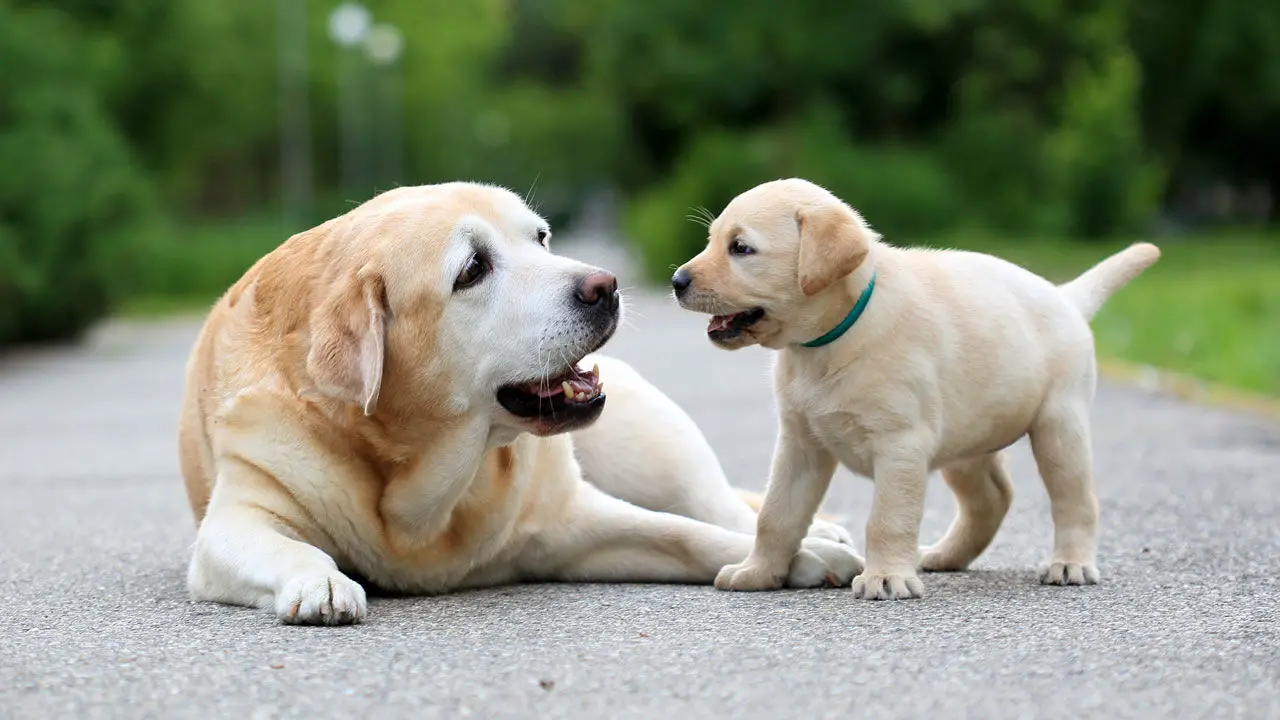Almost all dogs from puppyhood to the very old years love games. One of the favorite amusements of many dogs is considered to be playing with a stick found on the street – a fallen, broken, or sawn tree branch. Moreover, such a toy, as a rule, is welcomed by the owners of animals, since the stick, firstly, consists of natural wood, and secondly, it is completely free.

Dangerous stick games
Is it okay for dogs to gnaw on sticks, is it worth fearlessly letting beloved pets play with them? In short, sticks are not safe toys for animals, let’s look at why:
- When letting your dog play with a stick outside, you can never be sure that there are no pathogenic bacteria or viruses on its surface. There is a possibility that a stick picked up from the ground was recently gnawed by an infected animal. And if we are talking about a stick that the owner will pick from the tree just before giving it to his dog? Well, this is also not the best toy, as it can also contain dangerous germs left by birds or insects;
- On a stick picked up from the ground, eggs of endoparasites – helminths may be present. They will happily penetrate the dog’s body, significantly impairing the quality of life of the animal;
- It is dangerous for puppies to gnaw sticks during the period of changing teeth when their gums ache very much. Any stick (even one that is torn from a tree growing in your own garden) is not devoid of pollution that can cause severe inflammation of already suffering gums;
- According to veterinarian Jason Nicholas, sticks are often the reason dogs get lacerated lips, tongue, and palate. During the game, the wood gets stuck in the gums and leaves scratches on the tooth enamel (the loss of a tooth during the gnawing of wood is not excluded). It is also worth noting that animals can injure their sensitive nose when playing with a stick;
- It also happens that the dog eats sticks, and not just chews them. This can lead to injury to the pharynx, larynx, and trachea. In addition, swallowing large quantities of wood is fraught with blockages in the stomach and intestines. If the dog chews on sticks too often, he may have constipation, nausea, and other unpleasant problems;
- A sharp stick while gambling can pierce a dog’s chest, possibly causing injury to the diaphragm, lungs, or heart. And when a stick enters the stomach, damage to the liver, stomach, spleen, gallbladder, intestines, and bladder is possible. That is, a seemingly harmless game may cost an animal life;
- It is impossible to exclude eye injuries, damage to nerves and blood vessels of the organs of vision when the dog plays with a stick. In addition, a sharp and long stick, hitting the eye, can even penetrate the animal’s brain, which is fraught with too serious consequences;
- The owner does not always have the exact confidence of which tree his pet is gnawing on. The fact is that the bark of some trees and shrubs is extremely toxic to dogs. So, for example, contact with the wood of yew trees can lead to disastrous results in the form of convulsions, severe vomiting, and bradycardia, even a lethal outcome is possible;
- Some dogs, who love to gnaw picked up sticks during a walk, continue their “fun” game at home, biting the wooden legs of tables and chairs. Such fun makes the home look unattractive, and the owner has to spend money on repairing damaged or buying new furniture.
Well, it turns out that sticks are not so harmless. And in some cases, they can even cause death, depriving the animal of the most precious thing – life.
How to stop a dog from chewing on sticks
It is quite obvious that a stick, although simple and completely free, is far from the best toy for an animal. How to remove your dog’s interest in sticks? You can try the following actions:
- To switch the dog’s attention from sticks to something else, it is worth purchasing a variety of toys in the form of balls, squeaks, rattles, plates (or others). It is important that they are made of quality materials and do not have parts that the pet can easily bite off. Let the toys be available to the animal at any time;
- Going out for a walk, you should take with you some kind of toy for the dog and a treat. As soon as the animal shows interest in the coveted stick, he should immediately be offered a toy. If the dog takes the toy, forgetting about the stick, it will have to be praised and treated. By the way, it’s great if the animal knows the commands “Fu!” and “You can’t!”, and besides, he also obeys its owner. It will be much easier to “negotiate” with a trained animal;
- While walking, it is worth switching the dog’s attention from sticks lying on the ground to something more interesting. You can offer the dog some interesting game, for example, the same catch-up or catching a rubber ball. The owner is required to set a good tone for the game, that is, you need to be with your pet on the same fun wave;
- A dog who loves sticks can be tricked. To do this, you need to take several thick enough sticks without sharp edges (it is better if they are torn from a tree, and not picked up from the ground). The wood of these few sticks should be smeared with something bitter, such as mustard. If you do this trick for several days, the dog, most likely, in the future will refuse to chew on sticks, believing that they all have become very tasteless for some unknown reason. In addition to mustard, you can use special sprays that help wean animals from gnawing everything. These products are sold at pet stores;
- Some dogs don’t bite sticks for fun. Their bodies simply require plant foods containing vitamins, minerals, and fiber. Perhaps the owner should reconsider the diet of his animal, including vegetables and even some fruits. If you do not want to adjust the menu, you can consult a veterinarian about taking vitamin preparations;

- Some dogs may be affected by this trick. For a walk, you need to take with you a small spray bottle filled with clean water. If the animal grabs sticks from the ground, not responding to the commands “Fu” and “No”, a small amount of water will have to splash on the nose of the naughty animal. Most likely, after such a “shower” the pet will release the stick from its mouth. Of course, you can spray water on the muzzle only in the warm season;
- There are not so many sticks lying on the asphalt in the center of a large metropolis. But during a foray into nature, finding them is easier than ever. The owner of the animal can take a whistle with him, which he will have to whistle every time the animal grabs the stick. The dog is more likely to release the stick from its mouth, distracted by a loud sound.
